|
|
 |
|
|
|
|
 |
|
Dedicated to those who
served in VT-4, VB-4, VF-4,
VMF-124 and VMF-213
|
|
|
 |
 |
|
Memories
|
 |
 |
|
By Lawrence L. "Ham" Hamrick, VT-4
|
 |
 |
|
I reported for duty with Torpedo Squadron 4 with Lt(jg) John H. Palmer on February 10, 1943. 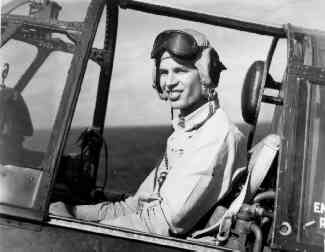 I had married the day before and Skipper "Hutch" Hutcheson greeted that good news by putting me in the 50-caliber gun turret of his TBF and flying most of the day. In a few days, the squadron returned from Norfolk to Quonset Point, Rhode Island, our home base. I managed to carrier-qualify in the TBF before we headed for vacation. Do you remember Argentia, Newfoundland and the two peaks in the final approach that we called "Mae West?" I'll never forget the day that the Air Group commander went charging down the runway in a TBF with his wings folded and the whole Air Group watching. We night-carrier qualified, all except George W. Wright. He landed with his wheels sticking straight up in that cold, cold water. We thought that was all for G. W., but the tin cans pulled him out and got him to the hospital. That was the night I took off with my wings unlocked and wondered what the load buzzing was. I had married the day before and Skipper "Hutch" Hutcheson greeted that good news by putting me in the 50-caliber gun turret of his TBF and flying most of the day. In a few days, the squadron returned from Norfolk to Quonset Point, Rhode Island, our home base. I managed to carrier-qualify in the TBF before we headed for vacation. Do you remember Argentia, Newfoundland and the two peaks in the final approach that we called "Mae West?" I'll never forget the day that the Air Group commander went charging down the runway in a TBF with his wings folded and the whole Air Group watching. We night-carrier qualified, all except George W. Wright. He landed with his wheels sticking straight up in that cold, cold water. We thought that was all for G. W., but the tin cans pulled him out and got him to the hospital. That was the night I took off with my wings unlocked and wondered what the load buzzing was.
After a brief honeymoon at Quonset Point in the summer of 1943, the USS Ranger headed East to join the British Home Fleet at Scapa Flow, Scotland.
The Captain arranged for a little shipyard work at Edinburgh, thus we were able to enjoy some liberty. VF-4 Skipper George More and I were ordered to a British torpedo training station. I flew around in the rear seat of a flimsy British torpedo plane while the Skipper enjoyed golf at the famous old St. Andrew Golf and Country Club.
On October 4, 1943 during OPERATION LEADER, Charlie Barr and I flew wing on J. A. Ruddy as we hit German shipping along the Norwegian Coast. As we made landfall and turned North, one lone anti-aircraft gun hit Johnnie Palmer's plane. That was the end of the war for Johnnie and his crew members. Johnnie got down safely, but was a POW at Stalag III for the rest of the war. I don't think his two crew members, Joseph L. Zalom and Reginald H. Miller, were able to bail out. (See Airmen Missing in Action and Prisoners of War from Air Group 4.)
|

|
|
Commodore Gordon Rowe, Commander of the USS Ranger Task Force, presents medal to Lt Lee L. (Ham) Hamrick, VT-4.
|
|
|
That was the day that Jerry Thomas almost went swimming in the North Atlantic. He took a hit in the engine and as his wheels hit the deck, that engine froze. Jerry sure didn't want to go swimming in the North Atlantic!
We kept Johnnie Palmer's logbook in the Ready Room after he got shot down. Felix Ward made the following notes in the logbook, and I added my own comments.
|
 |
|
|
|
Felix E. Ward's Notes in Palmer's Logbook
"I thought I'd write a brief history of the squadron since you left us. We came back to the States in December 1943 and started NCLs (night carrier landings) on the same ship. About this time we all got married, Bob Ruth, Will Souza, Buck Barnett, and myself.
We lost Jack Fulnecky (VB-4) and Edwards (VF-4).
We rested for a week or so, then were detached from the ship to form a larger air group. We were based at Ayer, Massachusetts. Oh, I forgot to mention that Hutch Hutcheson was given the squadron in December 1943 and Woot Taylor the command of Torpedo 7 (5/15/44)
Johnnie, I know you will be sorry to read the next few lines: Taylor was killed at Quonset the other day while checking out in a F6F. We attended his memorial service last Sunday. We miss him very much. The squadron is sure getting big—25 pilots now. Good boys too! Ha! They know a hell of a lot more than we did when we first came to "Tare 4."
Dear Johnnie: From the looks of things now it shouldn't be too long before you come home—we are sweating you out, fellow. Wish you could be here with us in Hawaii—we have a good set up; fly quite a bit, and the squadron is in the best shape I've seen it. Looks like we will get to see some Zeros before too long. (9/5/44)
My Notes in Palmer's Logbook
I wrote you last night but forgot to congratulate you on that son of yours. I must put a PS in the letter. The invasion got underway on June 6, 1944. We were in Hyannis getting in some torpedo work. Used a tin can up in the bay for practice drops. Johnnie, we are really whipping this outfit into shape. I got in 76 hours last month and filled up one logbook, 1260 hours. Got to leave here in less than 2 weeks, going after Tojo. Going to leave our planes here and pick up new ones on the West Coast.
Johnnie, I will tell you a little something about the raid (OPERATION LEADER) while I can think of nothing else to say. You really had tough luck. I wish you could have dropped your bombs before they hit you. We figure some shore battery did the job and it was just a lucky hit, probably shooting at someone else. No doubt you saw the smoke from the first ship. Woot, Felix, and Ruth (your wing man) hit it but hard. The German ship managed to make the beach but burned up everything but the hull. Hutch and Barnett got the smaller one-stack vessel. Then I went down and strafed a barge and mashed the button but no bombs fell; I had my torpedo/bomb switch on torpedo! I made another pass and dropped just over the bow. He headed for the beach. Then Jerry Thomas laid one right in the middle of the barge (oil barge, I think).
Ruddy and I then made a pass at an 8,000-ton job, the largest of the morning. I got hits with two 500-pounders and he overshot. I got credit for one short, one on, and he got credit for one on and one over. The other boys dropped on three other 4,000-5,000-ton jobs. Ruddy got a hit on the stern of one. As we started home, I realized someone was missing. I checked every pilot before I would let myself think it was you. I really got a lonesome feeling then, Johnnie—we had been together for so long. I bet you got a lonesome feeling when you hit the soil of Norway, too.
On our way back, Jerry Thomas lost most of his oil; one cylinder stopped a 20mm. The engine froze when he hit the deck. We beat the other group back because we got rid of our bombs before we reached the going back point.
Two of our dive bombers were missing: Sumner Davis and Clyde Tucker (VB-4). Davis made a good forced landing, but Tucker went down in flames. The dive bombers hit just about as many ships as we did. Some recommendations for awards went in, but I doubted if anything would ever come of it. Then, just a little while ago, a few came through. Ruddy and Woot got Distinguished Flying Crosses, Otto Klinsmann and Charlie Moore got Air Medals, along with others. In VT-4, Ruth, Thomas, and I got Air Medals. I haven't received mine as yet since my new wife "B" and I were on leave in Norfolk during the presentation.
We went back and sat around Boston awhile. Got 5 days leave in November. Some of the boys went to London and stayed in Edinburgh; finally got home in December in time for Xmas. But they pulled a hell of a trick. We had to standby all Xmas day to bomb two carriers off the coast which was a lot of baloney; they had given us Xmas day off, too! But I shouldn't fuss. At least I got home Xmas night and you must have had a bad Xmas. Will stop for now, Johnnie. Have got to get some dental work done. Ham. (6/21/44)
(John Palmer got his logbook back after the war.)
|
|
|
|
 |
 |
|
To continue the story, we headed back to the US in November 1943. The weather in the North Atlantic is not known to be very peaceful. As we headed into the rough sea, several steel plates of the ship's hull buckled. Every time the bow went down, the North Atlantic came in. And you guessed right, the sea came roaring into the junior officer's quarters! We enjoyed Thanksgiving in Iceland and were home for Christmas.
|

|
|
This 25-inch crack in the USS Rangerīs hull was caused by the violent storm of November 26, 1943.
|
|
|
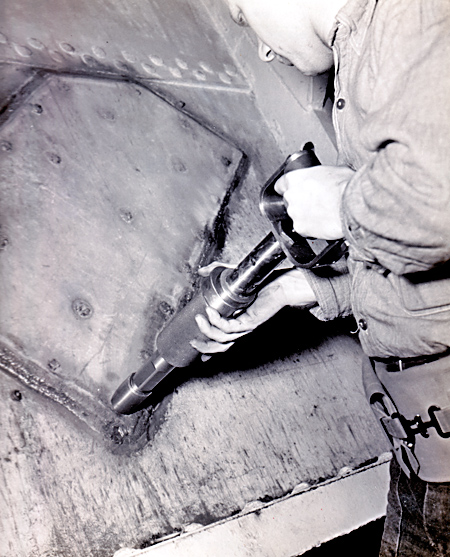
|
|
The crack is covered with a welded plate.
|
|
|
The spring of 1944 was spent at Ayer, Massachusetts reforming into an 18-plane squadron. Hilo, Hawaii was our summer base, working and flying night and day getting ready for the Pacific war. September 21, 1944 slowed us down with the tragic loss of Hutch, Candyman, Stocker, and 6 crew members (1).
|
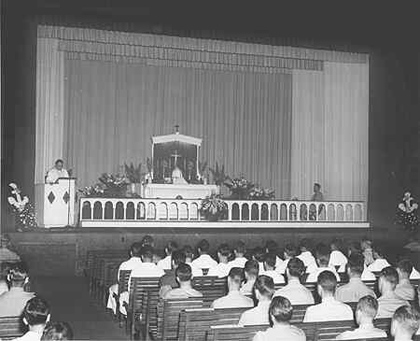
|
|
Memorial Service for the 9 airmen killed in the mid-air collision on September 21, 1944. Lost were Lt Cdr Homer Hamby Hutcheson, Lt(jg) William H. Canty, Ens Merrill Silver Stocker, ACRM Henry N. Karsemeyer, AOM2c Edward James Dooner, AOM2c Thomas Charles Bradley, AOM3c William Laverne Finkenbinder, AOM3c Harry Lester Johnston, and ARM3c Raymond N Glew.
St. Joseph Church, Hilo, Hawaii.
September 24, 1944.
|
|
|
During night flying out of Hilo, one of the pilots (Jerry Thomas) tried to join up with a grass shack about 2,000 feet up on the side of the mountain peak. There was a small light that looked like a TBM running light and it was soon discovered that grass shacks fly awfully slow.
Felix Ward and I discussed the sun that shines on Hawaii tennis courts and it is one heck of a lot hotter than the Mississippi sun. We got fried!
The Navy gave us a few days vacation at Saipan in early November of 1944--drinking iodine and water and listening to the Marines shoot at Japs in the hills. It was a thrill, however, seeing Henry Fonda walk around wearing a Navy uniform.
The USS Bunker Hill (CV-17) was our landing field for a few weeks before we shifted to the USS Essex (CV-9).
During combat flights, Skipper Paul J. Davis took out the morning flights, leaving the afternoon flights to my wing. We were grateful for the information they passed to us on enemy gun positions. I'm sure we were able to avoid many hits due to our knowing enemy gun locations.
None of us will ever forget the noon launch of November 25, 1944. We didn't know a Japanese suicide plane had our flight deck bore-sighted (and we were loaded with bombs and torpedoes) until the aft gun mounts on the island structure opened up over our heads. A mere few seconds later the enemy plane crashed just ahead of our front row fighters. By the grace of our Heavenly Father, those few feet saved countless lives.
|

|
|
The Yokosuka D4Y3 dive bomber piloted by Yoshinori Yamaguchi strikes the USS Essex, November 25, 1944.
|
|
|
Back to Jerry Thomas and his love of swimming. One morning Skipper Davis' flight was blown off course and made landfall about 100 miles aft position. His resolute determination made it imperative that he change course and head for the target. This somewhat multiplies the distance back to home base. Three of the old, tired TBMs said, "Now look here you torpedo plane drivers, we've got a little age on us and it takes a little more petrol for us than these young bucks. We'll do the best we can, but it looks like some of you drivers may have to swim home." Wouldn't you know it! Jerry Thomas, two more drivers, and three crew members were afforded the unusual opportunity of enjoying a swim in the South China Sea. The issue became critical when the Essex had to buy back three pilots and three crew members from the destroyer that picked them up. One keg of ice cream for each crew member!
|
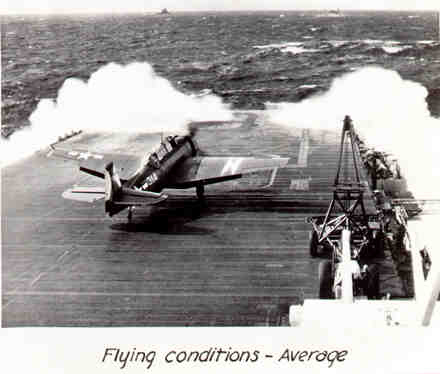
|
|
Lee L. (Ham) Hamrick takes off the pitching flight deck of the USS Essex during a Pacific storm on February 22, 1945, in support of the invasion of Iwo Jima. The flight deck is about 80 feet above the water level. Note that the pilot has popped the flaps about half-way down the flight deck.
|
|
|
Footnotes
(1) The pilots lost were Lt Cdr Homer H. (Hutch) Hutcheson, Lt(jg) Willaim H. (Candyman) Canty, and Ens Merrill Silver Stocker. The cremen lost were ACRM Henry N. Karsemeyer, AOM2c Edward James Dooner, AOM2c Thomas Charles Bradley, AOM3c William Laverne Finkenbinder, AOM3c Harry Lester Johnston, and ARM3c Raymond N. Glew.
|
 |
|
|
|
Lt Hamrick stayed in the Navy after WWII. He had additional duty aboard the USS Kearage (CR33) and the USS Midway (CVA-41). He flew SB2Cs, AD-1s, helicopters, and eventually multi-engine C-118s. He completed 22 years, 11 months, and 17 days "for good old Uncle Sam." Back in civilian life, Hamrick became general manager of the largest grain elevator in North Carolina. He died of cancer on July 12, 1981.
|
|
|
|
|
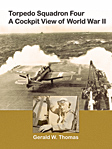
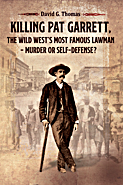

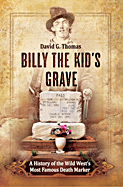
 I had married the day before and Skipper "Hutch" Hutcheson greeted that good news by putting me in the 50-caliber gun turret of his TBF and flying most of the day. In a few days, the squadron returned from Norfolk to Quonset Point, Rhode Island, our home base. I managed to carrier-qualify in the TBF before we headed for vacation. Do you remember Argentia, Newfoundland and the two peaks in the final approach that we called "Mae West?" I'll never forget the day that the Air Group commander went charging down the runway in a TBF with his wings folded and the whole Air Group watching. We night-carrier qualified, all except George W. Wright. He landed with his wheels sticking straight up in that cold, cold water. We thought that was all for G. W., but the tin cans pulled him out and got him to the hospital. That was the night I took off with my wings unlocked and wondered what the load buzzing was.
I had married the day before and Skipper "Hutch" Hutcheson greeted that good news by putting me in the 50-caliber gun turret of his TBF and flying most of the day. In a few days, the squadron returned from Norfolk to Quonset Point, Rhode Island, our home base. I managed to carrier-qualify in the TBF before we headed for vacation. Do you remember Argentia, Newfoundland and the two peaks in the final approach that we called "Mae West?" I'll never forget the day that the Air Group commander went charging down the runway in a TBF with his wings folded and the whole Air Group watching. We night-carrier qualified, all except George W. Wright. He landed with his wheels sticking straight up in that cold, cold water. We thought that was all for G. W., but the tin cans pulled him out and got him to the hospital. That was the night I took off with my wings unlocked and wondered what the load buzzing was.




